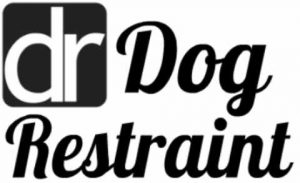We're an affiliate We hope you love the products we recommend! Just so you know, we may collect a share of sales or other compensation from the links on this page.
Contents
 How to Dog Proof a Room: Keep Your Pup Safe and Your Home Intact
How to Dog Proof a Room: Keep Your Pup Safe and Your Home Intact
As a dog owner, you want to make sure your furry friend is safe and happy at all times. One way to do this is to dog proof your home, particularly any rooms where your pup may spend a significant amount of time. Dog proofing a room not only protects your dog from harm, but also helps prevent damage to your home. In this article, we’ll provide you with a step-by-step guide on how to dog proof a room effectively and efficiently.
Why Dog Proofing a Room is Important
Before we delve into the specifics of dog proofing a room, let’s take a moment to understand why this is important. Dogs, particularly puppies, are naturally curious and love to explore their surroundings. This often involves chewing, digging, and scratching. While these behaviors are normal and even necessary for a dog’s development, they can also lead to damage to your home and potential harm to your dog. Dog proofing a room helps keep your pup safe and your home intact.
Step 1: Identify Potential Hazards
The first step in dog proofing a room is to identify any potential hazards. Look around the room and consider anything that your dog could potentially get into, chew on, or knock over. This could include electrical cords, plants, chemicals, and breakable objects. Make a list of these potential hazards so you can address them in the next step.
Step 2: Remove or Secure Potential Hazards
Now that you’ve identified potential hazards, it’s time to remove or secure them. This could mean placing electrical cords out of reach or covering them with cord protectors. You may also need to remove plants, chemicals, and breakable objects from the room altogether. If there are items that cannot be removed, such as furniture or appliances, make sure they are secured to the wall or floor to prevent tipping.
Step 3: Provide Safe Chew Toys
Dogs love to chew, and providing them with safe chew toys is a great way to redirect this behavior. Make sure to provide your pup with a variety of toys to keep them entertained and engaged. You may also want to consider adding puzzle toys or treat dispensers to the room to provide mental stimulation.
Step 4: Block Off Restricted Areas
If there are areas in the room that are off-limits to your dog, such as a fireplace or bookshelf, you’ll need to block them off. This could mean using baby gates or furniture to create a physical barrier. You may also need to teach your dog to stay away from these areas using positive reinforcement training.
Step 5: Cover Furniture and Flooring
Dogs can be messy, and covering furniture and flooring can help protect them from damage. Consider using slipcovers or furniture throws to protect your couches and chairs. You may also want to use a rug or floor protector to prevent scratches or stains on your flooring.
Step 6: Create a Comfortable Environment
Finally, make sure your dog is comfortable in the room. This could mean adding a dog bed, crate, or blanket for them to relax on. You may also want to provide them with access to water and food if they will be spending a significant amount of time in the room.
Conclusion
Dog proofing a room is an important step in keeping your pup safe and your home intact. By identifying potential hazards, removing or securing them, providing safe chew toys, blocking off restricted areas, covering furniture and flooring, and creating a comfortable environment, you can ensure your dog stays safe and happy in any room of your home.
FAQs
- How can I teach my dog to stay away from restricted areas?
Positive reinforcement training is a great way to teach your dog to stay away from restricted areas. Use treats, praise, and a firm but gentle voice to let your dog know when they are doing the right thing. Consistency is key, so make sure to reinforce this behavior every time your dog tries to enter a restricted area.
- What should I do if my dog chews on something they shouldn’t?
If your dog chews on something they shouldn’t, redirect their attention to a safe chew toy. Do not punish your dog, as this can be confusing and may even make the behavior worse. Instead, provide positive reinforcement when your dog chews on appropriate items.
- Can I use bitter apple spray to deter my dog from chewing?
Yes, bitter apple spray can be an effective deterrent for dogs who like to chew on furniture or other household items. However, it’s important to note that not all dogs are deterred by the taste of bitter apple, so you may need to try a few different methods to find what works for your pup.
- Is it necessary to cover furniture and flooring?
Covering furniture and flooring can help protect them from damage, but it may not be necessary for all dogs. If your dog is well-trained and does not exhibit destructive behavior, you may not need to cover your furniture and flooring. However, if your dog is a chewer or scratcher, it’s better to be safe than sorry and cover these items.
- How often should I dog proof a room?
You should dog proof a room any time your dog will be spending a significant amount of time in that space. This may mean dog proofing a room on a daily basis if your dog spends a lot of time indoors. It’s also a good idea to periodically check the room for potential hazards, even if your dog doesn’t spend a lot of time in there.

